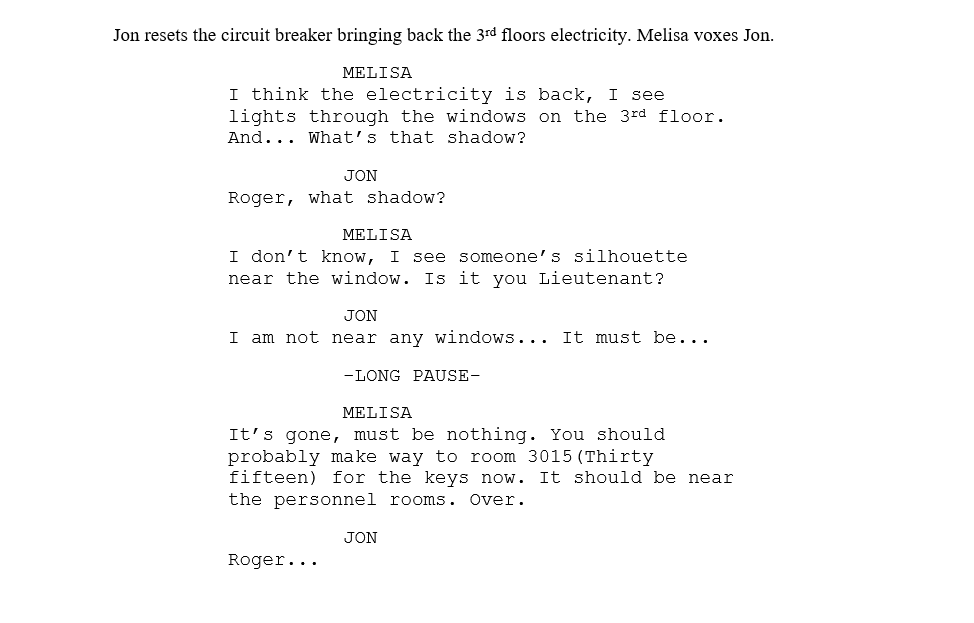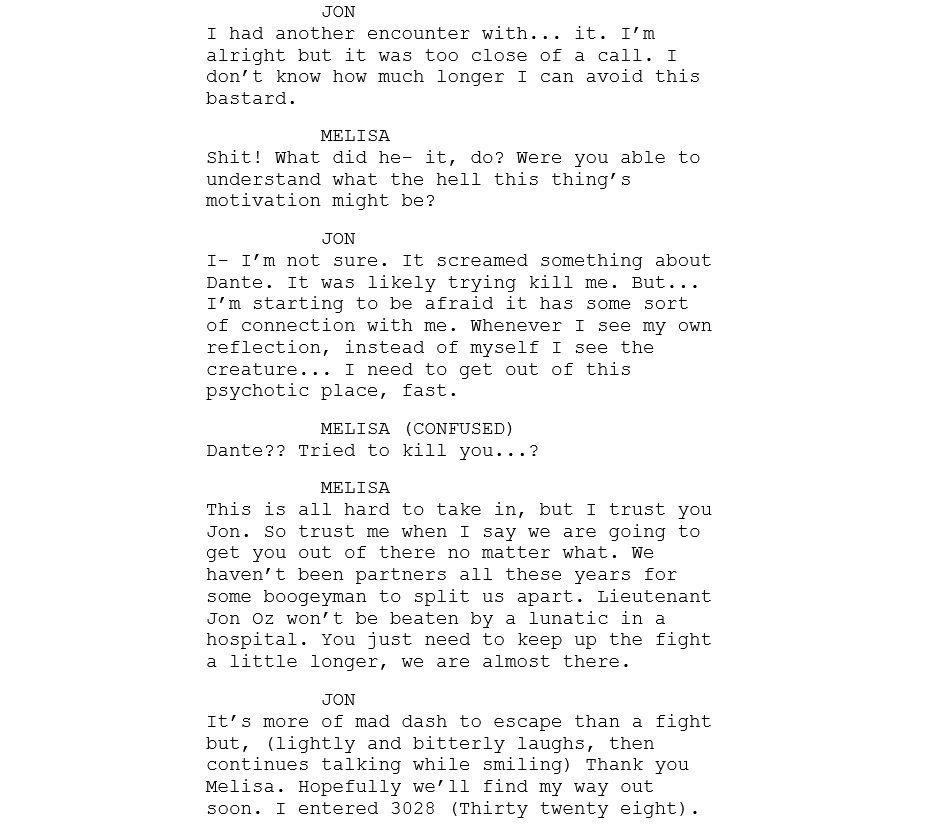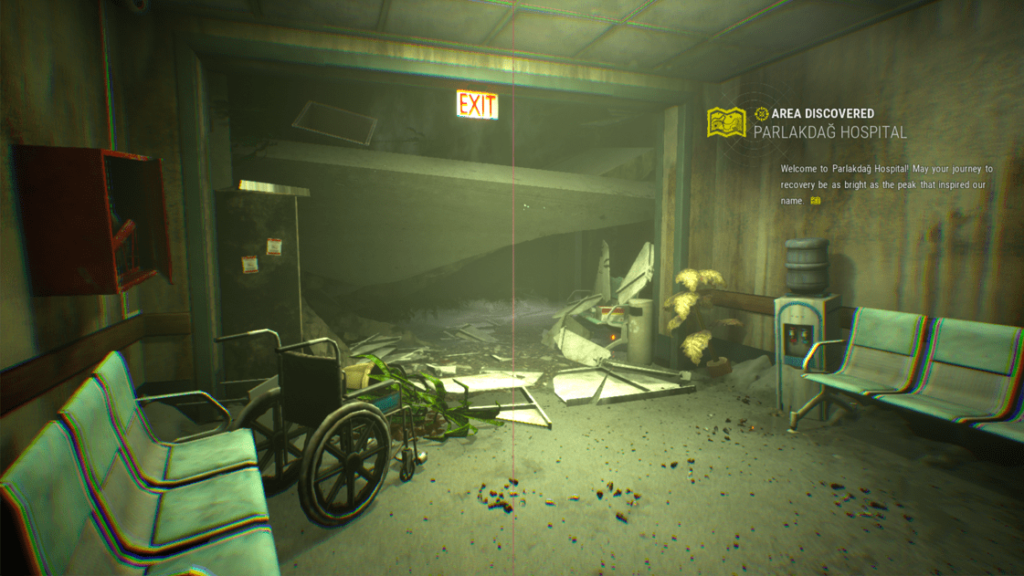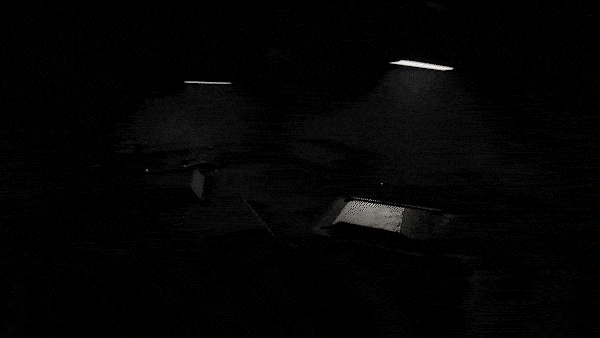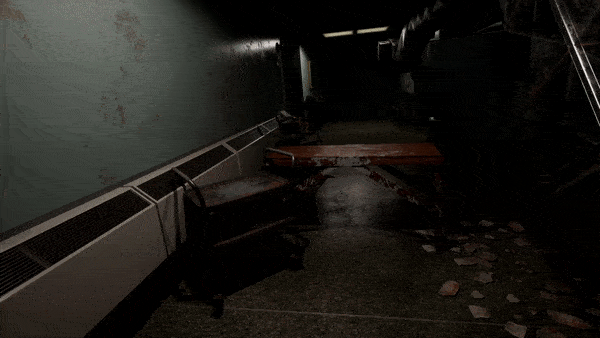
Title: Reflection
Genre: Horror | 1st Person | Narrative
Studio: Zonex Entertainment Studios
Team Size: 30
Engine: Unreal Engine 4 (C++)
Timeframe: 1 Year
Reflection is a first person horror game where the player is hunted down by their own reflection, needing to overcome puzzles and parkour obstacles to escape the hospital they were trapped in “for their own good”.
My Roles & Contribution
Gameplay & Level Design
• Designed horror encounters and mechanics that promoted motivation & satisfaction.
• Designing interactive visual cues to improve player clarity.
• Creating clear concise design documentation.
• Worked with the lead designer on the main antagonist's interactions and behavior towards player. Consequentially crafting an intimidating enemy that kept the player on their toes and engaged.
• Worked with designers on making levels that would immerse the player while highlighting gameplay objectives.
• Worked with other designers and developers to meld the narrative and gameplay elements together into one cohesive experience.
Narrative Design
• Designed the narrative flow and wrote the game's script.
• Wrote background lore for characters and environments.
• Designed in-game dialogues and events
• Integrated these seamlessly into the gameplay flow.
• Worked with level designers to modify level layouts where needed for better narrative flow integration.
• Collaborated with project lead to create the game's story and characters.
• Worked with and instructing an associate narrative designer to create narrative content, in writing in-game dialogue, and modifying narrative flow to accommodate changing project needs.
How I Designed the Horror Encounters & Game Mechanics
Horror Encounters: "Curiosity Killed the Cat"
Whilst designing Reflection's mechanics, I set out to provide a horror experience that relied less on stereotypes and tropes common to the genre, but instead had moments of fright that were more interactive. A lot of players often complain about cheap jump scares, so I aimed to create horror encounters that would be triggered by the players own curiosity and telegraphed to them before walking into it. This would lead observant players to feel clever when detecting something is going to happen, or create true "gotchya" moments as their expectations are subverted.
Below are two examples of horror encounters I designed for Reflection. On the left is a scare where the player observes blood dripping from the ceiling, if the player looks to the ceiling to the source of blood there will be a creature waiting to pounce on them as soon as they make eye contact. On the right is an encounter where the player needs to enter a room, the door to this room has a small window and it appears as if a doctor is looking through it. The player will open the door thinking to meet a living NPC, only to see the head of one hanging on a meat hook…
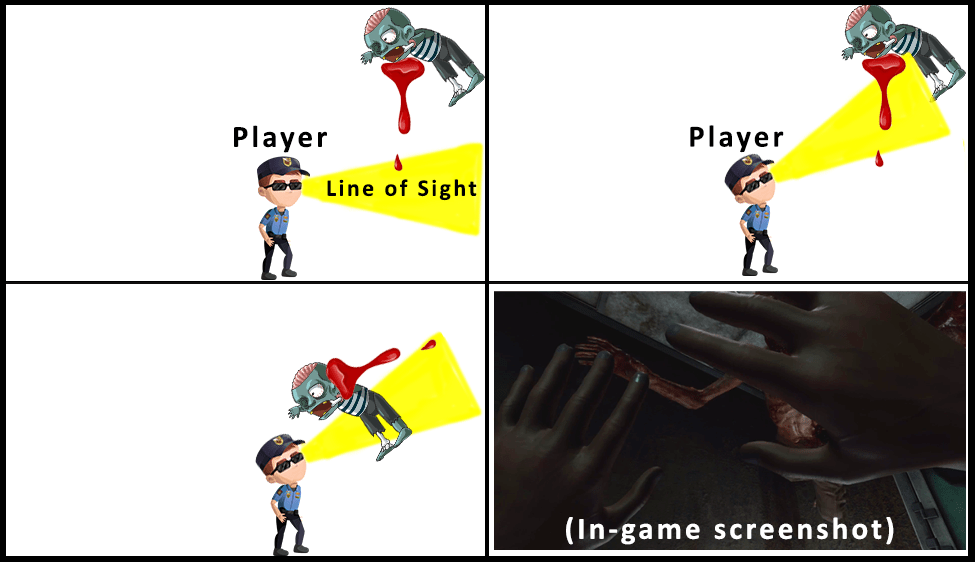
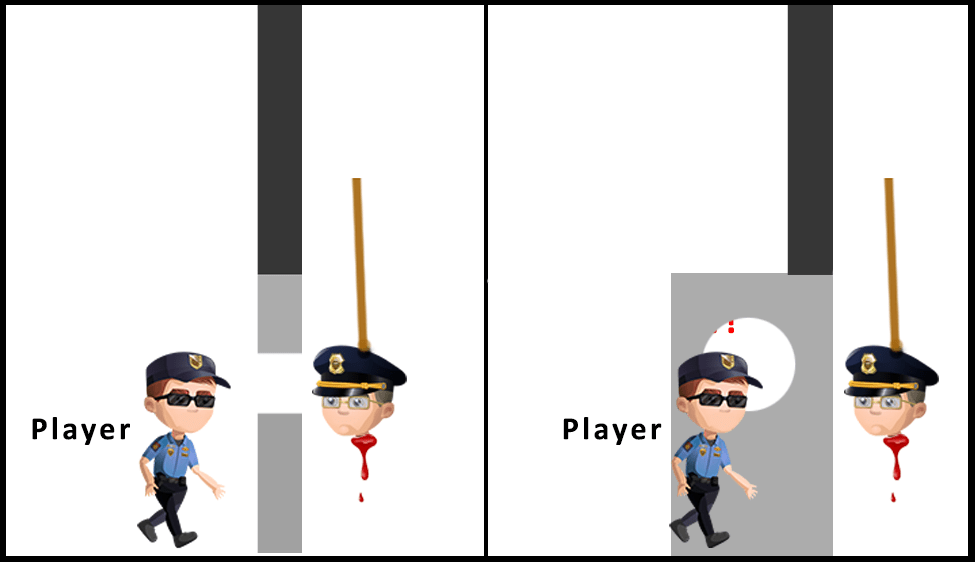
Progression Without Loss of Immersion
Reflection progresses mostly linearly with a number of short optional paths and narrative reinforced guidance meant to flesh out the game's world and help it feel real.
For example: Throughout the escape journey police officer Jon Oz (the player character), is guided by his partner Melissa through a walkie talkie.
I especially designed this feature to reinforce immersion by using narrative elements to guide the player instead of generic prompts, this is supported by visual cues and designs with strong clarity. It is important that players find their way without breaking immersion.
Puzzles, Parkour & Shapeshifting Rooms
I worked on the parkour & changing room mechanics which intended to keep the game immersive, quick-paced, and fresh. These mechanics were specially implemented to stand out from other horror games.
I was a part of the collaborative design process of the levels, parkour elements, and puzzles. My objective was making immersive puzzles that relate to the environment and the narrative elements.
One of Reflection's important and unique selling points I played an important role in designing is its shapeshifting rooms. Certain areas will change its shape and become harder to traverse while being explored. This adds a dynamic element to support my goal of wanting the player to seldom feel safe in the environment they are in, amplifying tension.
Level Design & Documentation
Below is part of the design documentation I collaboratively created with the design team featuring a few different graphical breakdowns of the "3rd Floor" level. We employed an iterative design process of drawing out the level, developing it, and then moving it to the digital realm. We numbered the many rooms of levels allowing us to more concisely communicate about individual areas of the level. This greatly streamlined our creation process as well as helping me in creating the narrative side of things by being able to guide the player without breaking immersion.
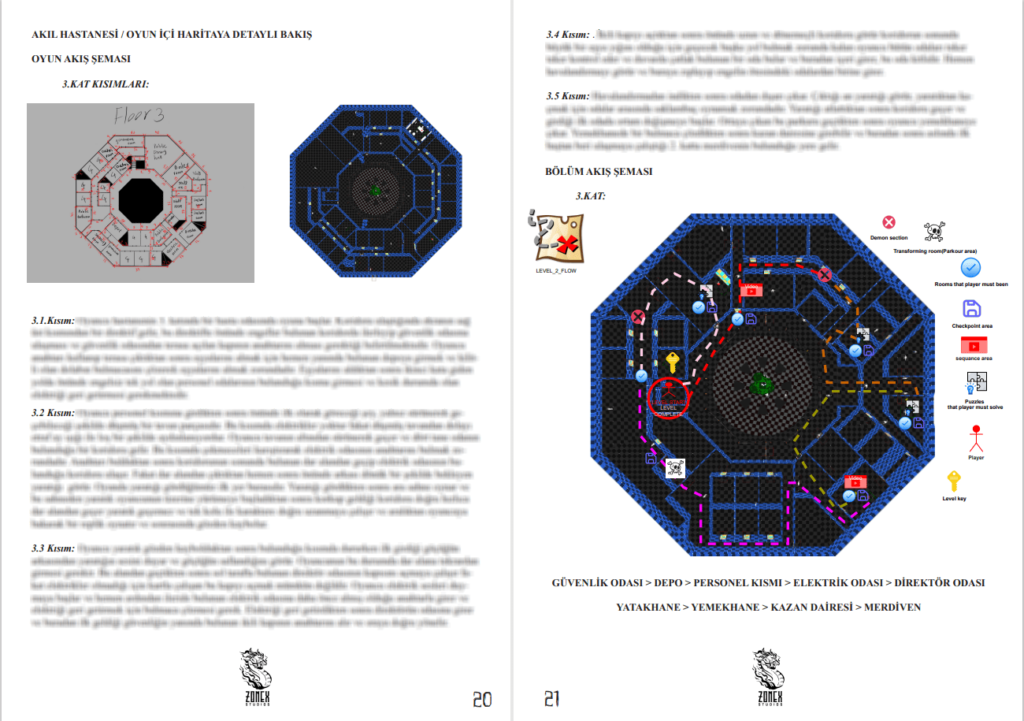
Designing The Main Antagonist: The Parasite
The Parasite is a major source of conflict and challenge for the player being the primary antagonist, designed to be a formidable and menacing presence in the game hunting the player.
As part of the team, my contributions to the Parasite's design were primarily writing its personality and background, then translating that into gameplay mechanics and behavior fitting its narrative counterparts.
I collaboratively designed its encounters with the player while being in charge of what the Parasite says and does during them. I aimed to create a tense, varied, and engaging gameplay experience.
To achieve this I designed Parasite's behavior akin to a hunter toying with its prey. This creates uncertainty and tension for the player as there is a level of unpredictability to the Parasite, as being caught by it won't always result in the players death.
The Parasite's Evolution of Design
The Parasite, initially conceived as a twisted version of the player character, evolved into a more eldritch design to adapt and refine the character's concept to better fit the game's overall vision and mechanics.
For example: One challenge that I faced was needing more player-antagonist interactions along with the antagonist lacking unity with the environment.
Developing it into its final eldritch form associated with trees and roots allowed us to add more gameplay opportunities and immerse the player more utilizing the roots and vegetation in the world and obstacles.
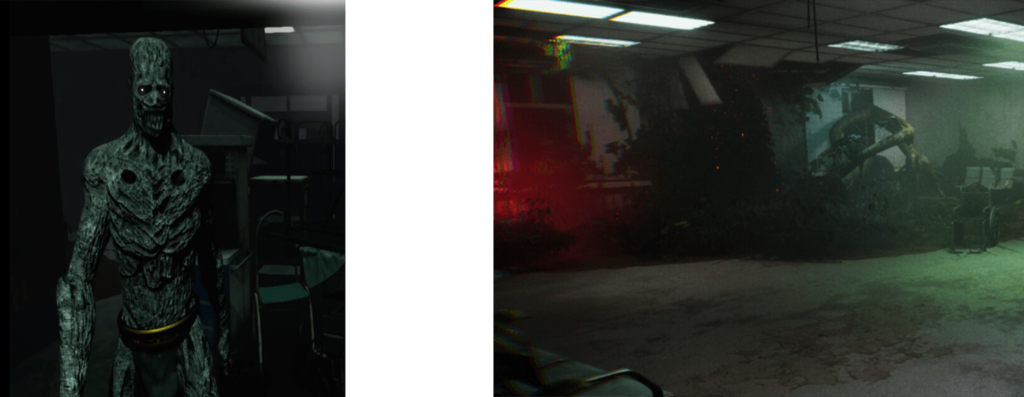
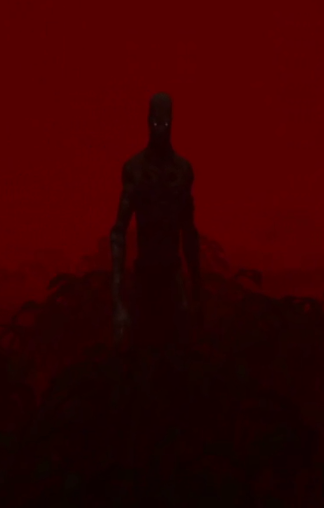
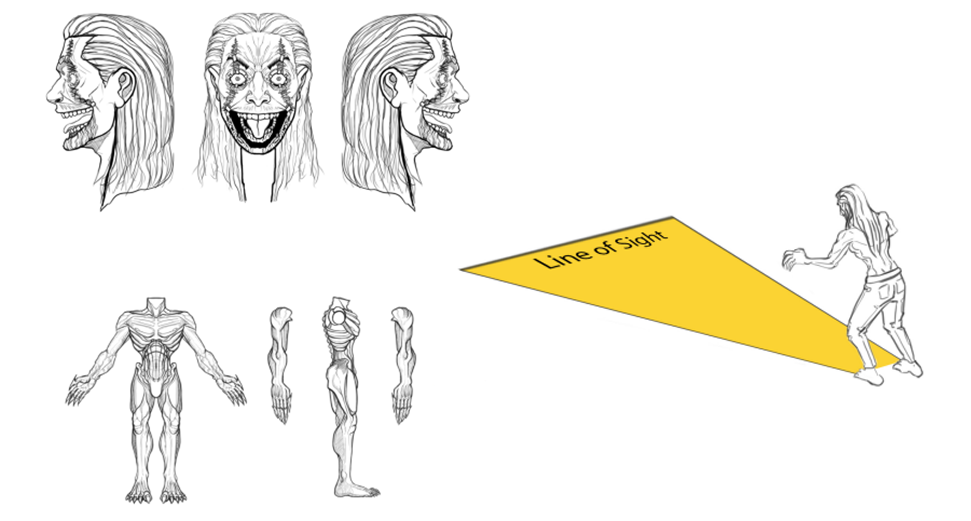
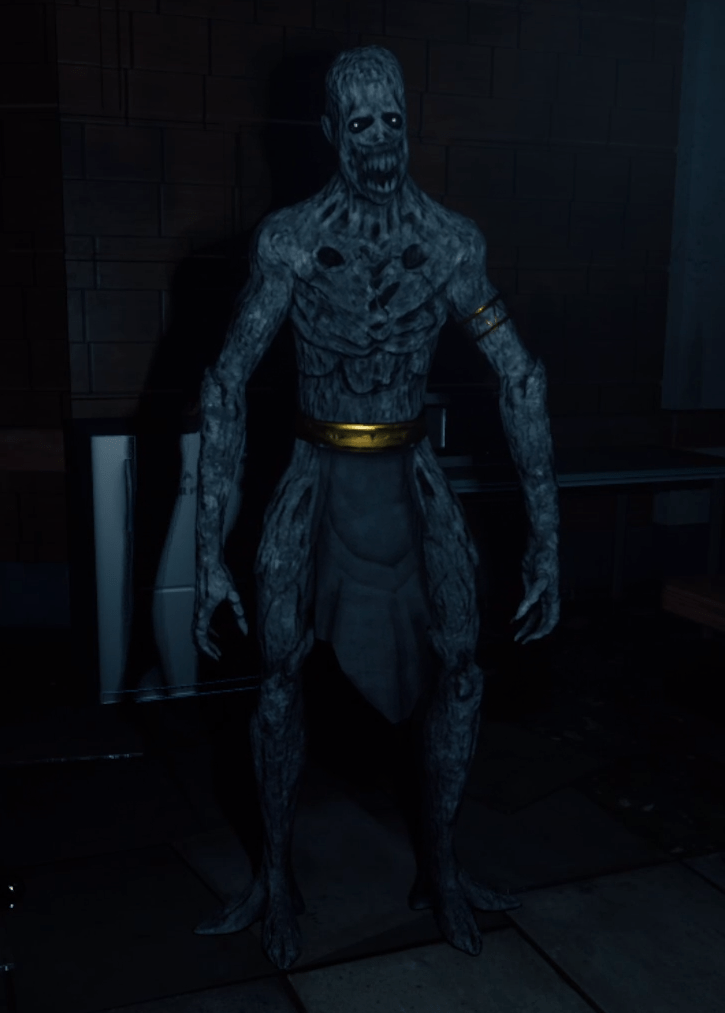
Priorities while designing the Parasite:
1. Hunter toying with prey: The Parasite needs to let the player have some freedom but still assert its dominance in encounters, and laugh at the player when separated.
2. Unity with the environment: Fostering a strong connection with the world, the player needs to feel like they are an outsider in the Parasite's turf.
3. Conflict & challenge: The Parasite must prevent and sabotage the player while they try to fulfill their objective, conflicts need to be caused by the Parasite.
4. Formidable and menacing presence: The Parasite must be fear inducing to the player, both aesthetically and in terms of being seemingly undefeatable.
Tradeoffs and gameplay counterparts:
1. Tension and uncertainty in the player, building up the Parasite as a threat and immersing the player.
2. Reinforces player feeling threatened and intimidated by the Parasite, this was turned into a priority especially to enrich gameplay resulting in aesthetic changes in the parasite having us need to sacrifice a bit of its physical similarities to the player.
3. The player has a number of hostile encounters with the Parasite and many of the obstacles are extensions of the Parasite's meddling with the environment.
4. The player is unable to physically overpower the Parasite, at most they can hurt it to distract it for an escape. The Parasite is always an intimidating presence and remains so until its weakness is discovered.
How I Designed The Narrative Flow, Dialogue, and Lore
Being in charge of the narrative, Reflection's script, story, background lore, and opening cinematic were written by me. I worked closely with my team to ensure consistency, scope, quality content, and meeting our established goals.
To the right are two snippets from the opening cinematic. I had 3 goals in while writing this intro;
1. Provide context and information about the story.
2. Provide this while leaving room for curiosity and intrigue, so establishing a hook.
3. To tense and creep the player out about what is to come, ending forebodingly.
I additionally wrote a number of item descriptions, in-game journal entries, audio-logs, other collectible lore and player-facing messages.
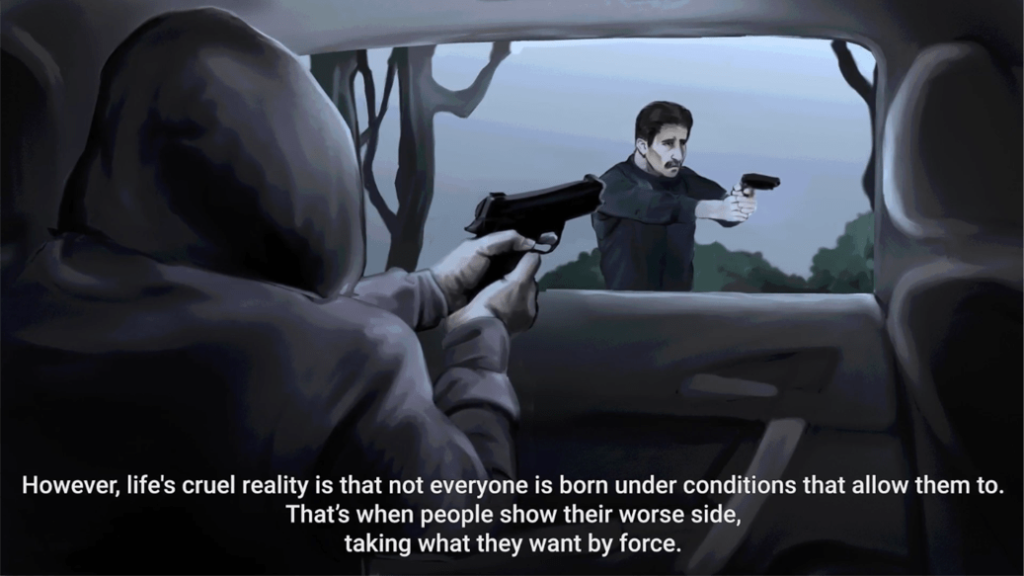
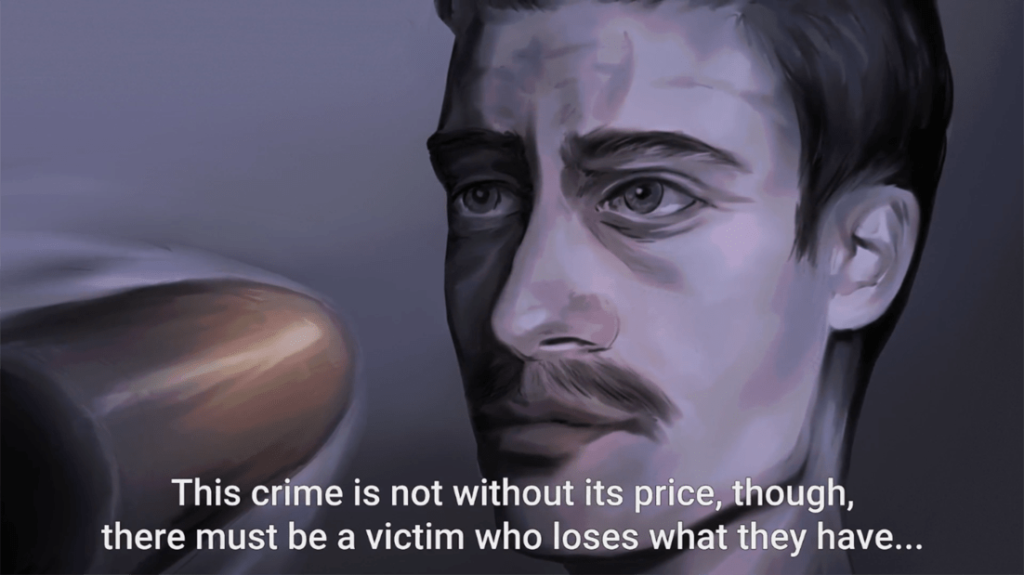
I collaborated with the design and art departments in order to have a narrative fitting the style and gameplay we were aiming for.
The script evolved and changed throughout the development of the game in order to accommodate changing gameplay requirements and limitations, respecting the scope of the project.
Script Excerpts:
